M274 Mule (1956)
 US Army - Mechanical Mule.
US Army - Mechanical Mule.
M274 ½-ton 4×4 utility platform truck, 11,240 built 1956-1970.
Replacing the good old Mule
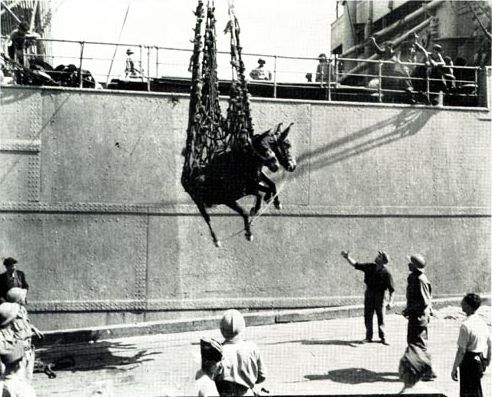 USS Mexican, Mules offloaded in 1944
USS Mexican, Mules offloaded in 1944
The animal (a man-bred hybrid Donkey-Horse) was a well-requested "item" traditionally in many infantry corps around the world and went back straight to the antiquity. Whereas the donkey could carry a lot but was unruly unlike a horse, a mix was tempting for carrying loads. Indeed a few mules can carry a live weight up to 160 kg (353 lb) and unlike horses, they have a considerable endurance and able to carry up to 20% of their body weight, c90 kg (198 lb), with those trained today in the Army of Pakistan being able to carry 72 kg (159 lb), walk 26 km (16.2 mi) straight as requirement. Mule trains had been a staple of transportation for millenias and still are in rugged terrain especially in mountain. China is still today the largest provider.
Back in WW1 and WW2 Mules were put in good use by US troops on some terrains that "fit the bill" and also because of the lack of transports. This was especially true for Italy and Sicily, but also Greece (during the Civil War against the Communist insurgency 10,000 mules were used.). They were also used in Burma and many other theaters (both the Italians and Greeks used these in the winter of 1940). They were not used however in Korea at first (but was by North Koreans/Chinese). Already at this stage, the idea to replace these by a "mechanical mule" was already thought of.
By the end of the Korean War mules were left in just two units at Fort Carson (Colorado) and at the 4th Field Artillery Battalion (pack) and by 1956, these 322 mules left were sold or transferred to the National Park/Forest Services. Many of these benefited from these experienced and well-trained army pack mules. Saddle horses also disappeared from the US inventory although
cavalry did still play a part also in WW2.
Quick descriptive
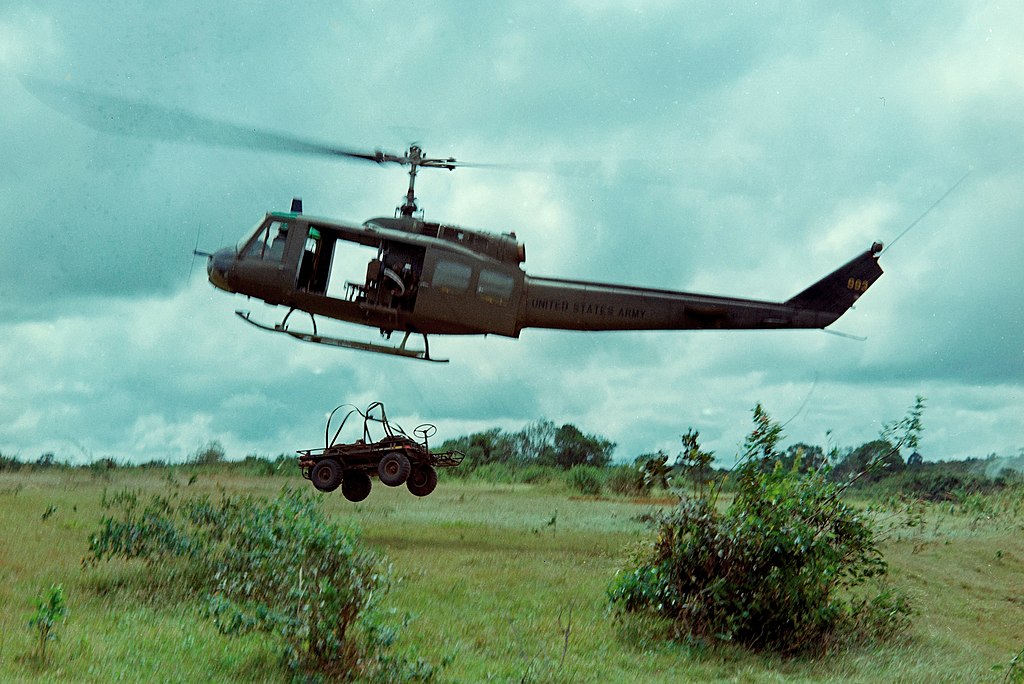 UH-1 about to drop a M274, Operation Harrison 1966
UH-1 about to drop a M274, Operation Harrison 1966
The "Mechanical Mule", likewise called "Armed force Mule" is essentially a four wheel, 1/2 ton vehicle with a 48" x 95" long stage mounted on two axles. It was intended for battle use by Willys in the mid 1950's, solely for the US Armed force. Having the option to convey a heap of 1,000 lbs, it turned into the principal freight transporter ready to take care of too much, and it was immediately acknowledged as an important instrument.
The reasonableness and solidness of the M274 were immediately perceived, and after four years, the Mechanical Mule was presented in airborne, infantry and marine units too. The creation was subsequently granted to Bowen Mc Laughlin/York, then to Brunswick Corp., lastly to Baifield Businesses which fabricated the last donkeys toward the finish of 1970.
The Mechanical Mule was extensively utilized during the Vietnam Battle to move ammo, freight, staff, and weapons - A 106 mm recoilless rifle with rockets was mounted on it. The seat and the foot container can be confined and put away under the stage. Each wheel is given lifting shackles to work with lifting by helicopter or dropping by parachute. It was intended to be an extremely rough vehicle which could arrive on its wheels or even topsy turvy when dropped, despite everything have the option to be driven away.
The M274 and the M274 A1 were the primary models and were outfitted with a 4 chamber, air cooled Willys fuel motor. This motor was irksome and was subsequently supplanted in the models A2, A3, A4 and A5 with an air cooled 2 chamber evenly went against 4 cycle Mainland Hercules motor which ended up being an exceptional entertainer. All models are furnished with full time four wheel drive, two speed move case, and a three forward and one converse speed transmission, giving it six forward rates and two opposite.
The A5 model is a two wheel steer variation, though the previous models are four wheel steer. The motor is situated under the stage at the back, and it is safeguarded by a steel confine.
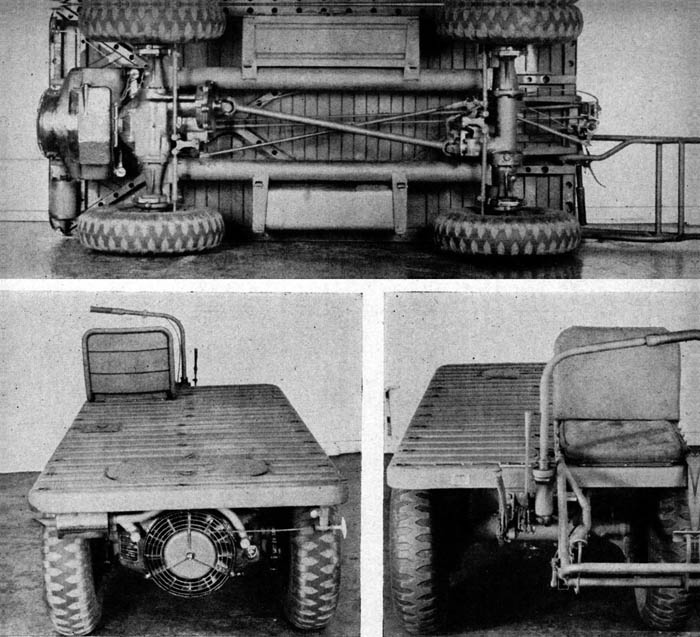
The shaft-driven four wheel drive framework gives the vehicle astounding foothold. Every one of the four wheels are totally locked consistently so the M274 keeps moving insofar as any wheel has footing. The gigantic 4' x 8' 1,000 lb limit bed gives a huge and valuable freight region encompassed by a handrail intended to get a heap without any problem.
The vehicle can be outfitted with a tow bar which interfaces with the directing math so the wheels are guided by the tow vehicle. This additionally permits the M274 to be a successful trailer which can be controlled around hindrances. The controlling wheel can be acclimated to a few positions, which permits driving from a riding, strolling, bowing or creeping position. The Mechanical Mule was never intended to be quick. At a maximum velocity of 25 mph, the principal objective was to stay up with troopers. Nor was it worked to be agreeable. The low strain tires were to retain the shocks. All things considered, it was worked for toughness and solidness, and it filled its need for however long it was being utilized.
Today, the M274 addresses many issues. Its benefits are exceptionally applauded by farmers and ranchers, plantations and wineries, by the ranger service, in modern applications, in development, in the mining business, by outside fans (hunting, fishing, boondocks setting up camp, and so forth), and by every inquirer who pretty much consistently finds another utilization for it. As a matter of fact, there is by all accounts no restriction to the various utilizations of the Mechanical Mule, which make it a definitive rough terrain "should have".
Genesis and development of the M274

1955 prototype airborne lorry based on a Willys Jeep, only 5 tested.
Going back to 1944
In WW2 Willys was trying to add improvements to its medical evacuation litter carrier which were on impassable terrain for the standard Jeep to access. The company's design was confirmed with the U.S. Patent 2457400 applied for on December 2, 1944. However it was only issued by December 28, 1948 with no further patents being delivered for this project. The arm however tested it Eglin Field in Florida, and its marshy, damp and hot conditions that could replocate tropical combat environments. The prototype proved useful as supply and men carrier of for other purposes, thus by 1948 the US Army purchased a few of these, soon renamed 'Jungle Burden Carrier' and aimed at the airborne forces procurement. Being lightweight, they had indeed a lot of potential to be paradropped or just landed from a glider. Helicopters were not yet considered.
And so after further tests, the US Army gave its go-ahead, with the added experience of Korea, in 1954. The vehicle was standardized as the M274 Mule by 1956 and started to equip airborne, and later infantry divisions, replacing or supplementing the the 1⁄4-short-ton (0.23-tonne) truck (Jeep ) and 3⁄4-short-ton (0.68-tonne) truck (Weapons Carrier/M37 series). In all, the vehicle was manufactured at Willys, Bowen Mc Laughlin York, and Baifield Industries in Brunswick from 1956 to 1970. It was also declined into several variants:
Variants

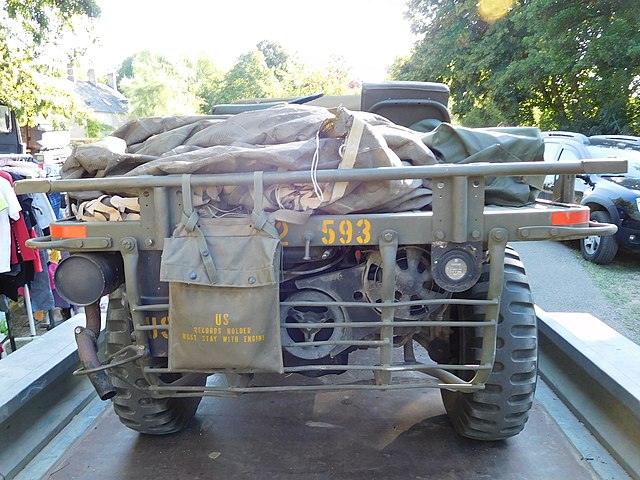
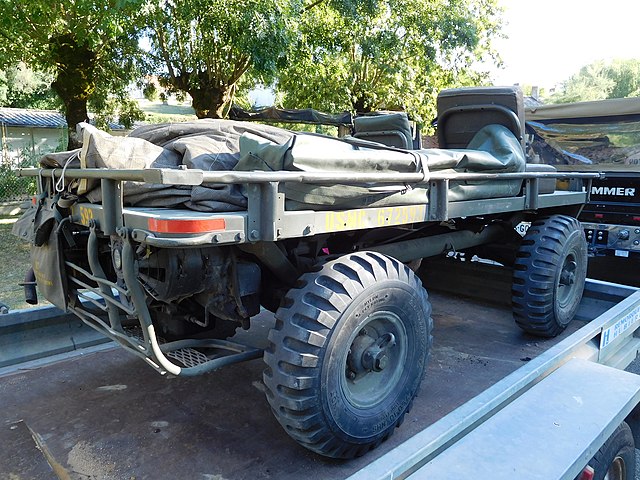
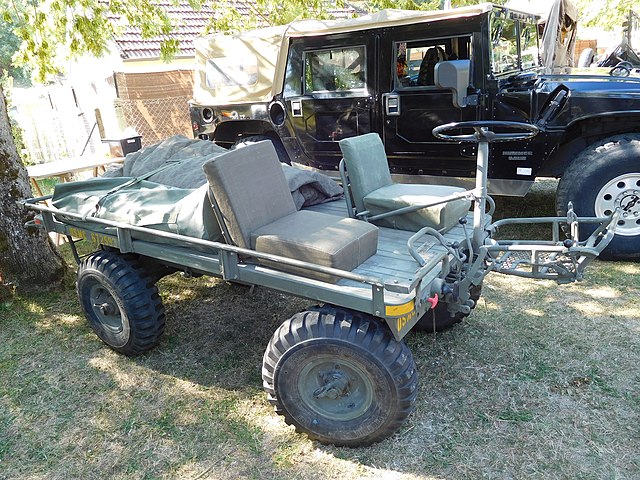 M274A5 Mech. Mule
M274A5 Mech. Mule
M274:
Base vehicle with a 4-cylinder Willys 4-cycle
M274 A1:
Uprated 4-cylinder Willys 4-cycle
M274 A2:
All had a 2-cyl. Continental-Hercules 2-cycle, air-cooled engine.
M274 A3:
M274 A4:
M274 A5:
2 WD and electric ignition as standard
Design

The M274 was designed as a barebone vehicle, basically a framed platform with four wheels and at first, no gearbox and single speed. However for 4x4 use, a simple gearbox was later designed to enable two, and later three speeds in two modes, enabling more torque on difficult terrain. Not supposed to be on road, it had no regulatory item making it lighter still (and no bodywork at all). There was just a seat, a direction column that could be moved forward in order to store more supplies, no bumpers nor lights. It had also no protection against the weather albeit a standard large payload canvas was provided.

Mule showing its max troop transport capacity, nine men.

Railroad adaptation of the M274

M274 used as mobile oratory

M274 in action, NAM

As supply carrier, Vietnam

Another Mule in Vietnam

Design of the direction shaft

Scheme, from pinterest (like all the others)

Mule running on three wheels.
Performances
Engine wise, this light platform (300 kgs) enabled the use of light air-cooled internal combustion engines not much in demand by the industry, which would also had a low rate and little consumption. A frugal, but rock-solid power unit, air cooled because it was simpler to repair and more reliable, it also had its final three-speed manual, non-synchromesh transmissions coupled with two-speed transfer cases over a four-wheel drive with tiny turning circle, but still reverse speed possible*. They also had no suspension but standard small tires and seat cushions. It could climb a 65% gradient, 45% side lope, climb a 30-40 cm vertical step, gap a one meter trench and ford up to 46 cm of water. But it can also be fully amphibious, either above water when strapped with canvas all around to float (no load) or just go underwater in small rivers, but this needed preparation: Front pre-cleaned removed, snorkel tube installed, valves closed on the fuel tank to keep the water out.
*The base was three forward and one reverse, so a total of six forward speeds and two reverse with the transfer case shift. The driver's seat could be removed, steering column moved forward to drive it reverse and accommodate more cargo if needed, but the steering column could be also moved further forward and down to continue advancing under fire, with the driver crawling behind it...
The engines, which differed between variants, at first a Willys 4-cyl. and later an even lighter 2-cyl. Continental Hercules, all mated to the same gearbox which enabled at lower speeds and high power (14 hp/10 kW) still enough torque to carry a heavy load and still climb over logs and attack steep slopes. The Third gear was engaged at 9 mph (14 km/h) in off-road mode and in High range First at 25 mph (40 km/) for flat terrain. 40 kph was indeed much faster than soldier's pace, and enabled more versatility as a battlefield "taxi". The engine A042 had a single muffler, with an air blower fan and shrouding. The starter used 2 spark plugs from a magneto, but it used to be a simple pull-cable-start like any lawn mower. It could also negociate all terrains based on its beamy, low pressure tires. On this chapter, if one wheel got blown off, the cargo was just shifted over and the vehicle will drive on its remaining wheels. It had a higher ground clearance by the use of "drop gears" to keep the axles higher at all times whatever the load.
A really versatile military platform
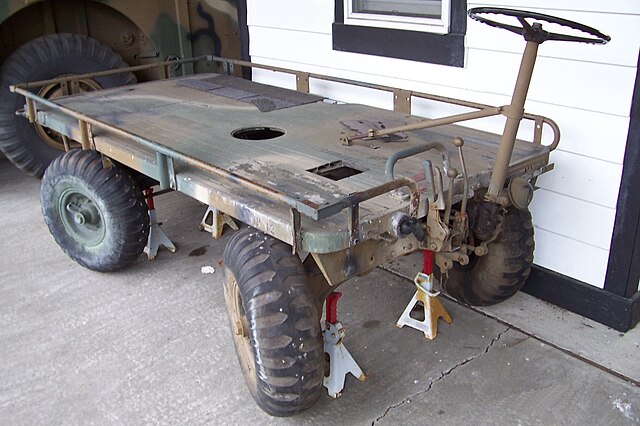 Stripped M274
Stripped M274
As barebones as it was, there was no shortage of imagination for the Army to look at ways to use the "mule". In standard, it came with a single seat, a 2.50 long (8.2 feet) flatbed all over, with handbars all around, and sometimes low wooden walls, with some hardpoint fixations and anti-slip cover. On this relatively large area, the 795 lb (361 kg) vehicle can accomodate a payload up to 0.45 tonnes as classified (455 kg off-road), more than its own weight. Based on a tiny 8 US gallons (30 L) fuel tank however operational range was limited to 108 mi (173.8 km), still impressive for such a light vehicle. In addition to the flatbed, which could accomodate five more seats, there was a small extra storage basket in front of the driver.
The "little bugger" was soon used mostly to carry the soldier's extra gear at platoon level in the field (water, extra ammunitions and rations), or used semi-independently to supply frontline échelons. It could also return with one stretcher with one injured man and two seated, acting as field ambulance, with the added benefit of being very low with no body, so it was a very difficult target to spot, albeit noisy, the only inconvenient of the air-cooled engine. It was thus totally unable to be used in special operations.
Soon, as it was a self-propelled platform, some had ideas to fit various ordnances not heavier than the prescribed max load:
In Vietnam War savvy mechanics in field workshops managed to transform these as deadly weapons carriers and they could support virtually any type of conventional weapon that can be bolted or welded on its flatbed. The only limit beyond weight, was the bulk and height of the payload, to avoid stability issues. truck. The most common were the installation of a pintle for a M60 7.62mm NATO light machine gun, or two, a sole M2HB 0.5 Caliber heavy machine gun, or even the M40 106 mm recoilless rifle that can deal with tanks (fitted behind the driver and kept low, turned backwards when moving), or better, a TOW 1st generation anti-tank missile system, with five spare missiles. For 400 kgs it packed quite a punch and was really easy to conceal.
The M274 Mechanical Mule was developed to replace both the 1/4-ton and 3/4-ton 4 X 4 vehicles in infantry and airborne infantry battalions. It needed to weigh less than 750 pounds and carry a cross-country load of 1,000 pounds plus a driver. Willys developed a pilot model in the 1950s which could carry 850 pounds on improved roads with 2-wheel or 4-wheel drive. The driver's seat could be removed, the steering column moved to accommodate more cargo.
Each wheel had shackles enabling helicopter lifting or para-dropping. Its frame was rugged enough that if landing upside-down it could be turned over easily and was still operational. It's versatility was amazing. It could be fitted with cable reels for signal use, used as a boat for river crossing, equipped with recoilless rifles and later TOW missiles. It could use severam weapons systems, like the TOW missile launcher, M40C Missile, 106mm recoiless rifle. It was not amphibious per se, having no buoyancy, but became so when cladding its cargo canvas all around, creating a makeshif boat for river crossing.
It became very popular with the Army and USMC in Vietnam and after the wa, lingered in depots and with the national guard for some time until be phased out a first time in 1978 as the Army determined it was simply now obsolete, planned to be replaced by the new HMMWV (High Mobility Multi-purpose Wheeled Vehicle) but the later rather replaced the Jeep and some troops asked for the void left in this niche category be replaced by the M-Gator, and off the shelf, four-wheel drive platform derived from the popular midwest John Deere Gator vehicle. This will be the object of a new article.
The M274 in action
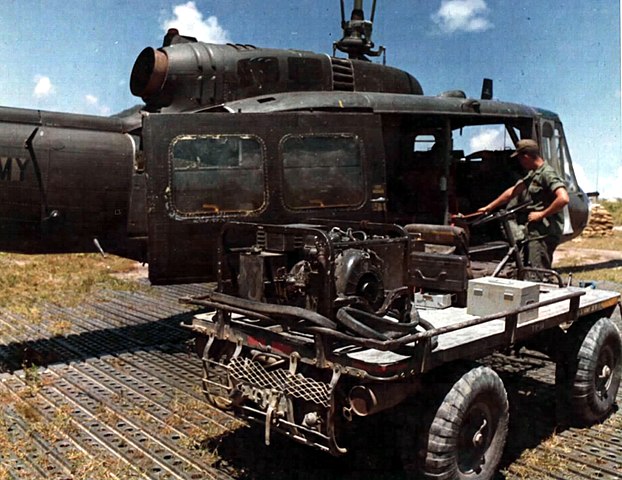 Mule loaded from a Huey UH1 in Vietnam
Mule loaded from a Huey UH1 in Vietnam
The Mule was either paradropped or just picked up and deposed by helicopters, which became the go-to method in Vietnam to carry men, supplies, and weaponry or ammunition in contested sectors. It remained in use until the 1980s. The concept of such a "naked" vehicle however did not pleased all while under fire. It was completely open and exposed, offering strickly no protection to the driver, but this was moderated by their use as rear échelon vehicles, not tactical ones.
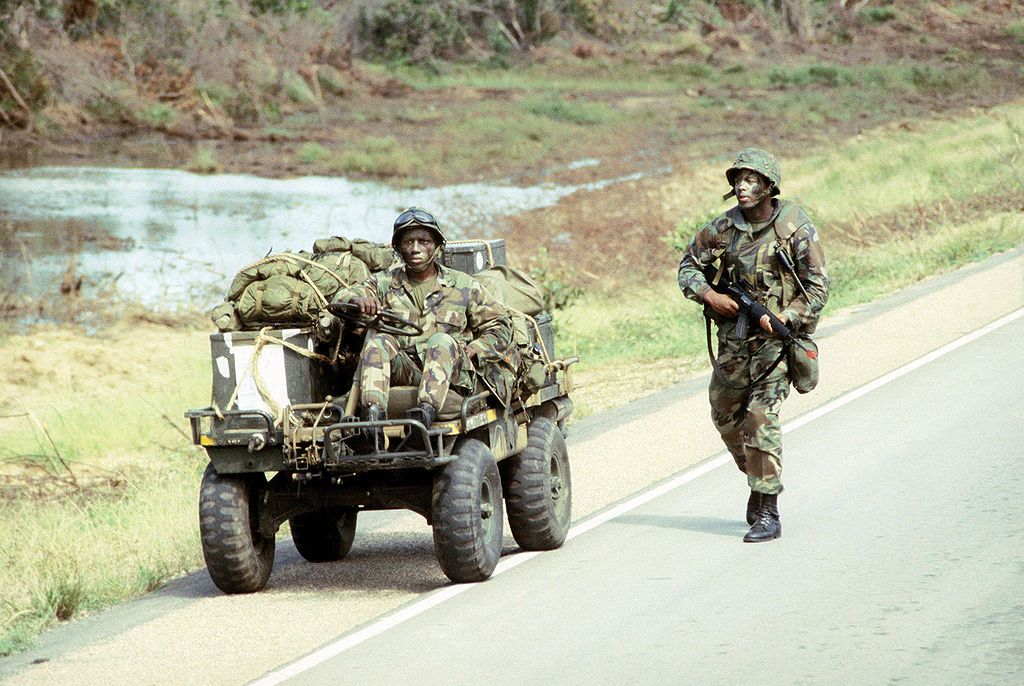 M274 mule, US Honduras field training Ex AHUAS TARA II, 1984
M274 mule, US Honduras field training Ex AHUAS TARA II, 1984
M274 (1956) |
| Dimensions (L-w-h) | 3 x 1.18 x 0.7 m (9.84 ft x 3.87 x 2.29 ft) |
| Weight/Payload | 395 kg/455 kg |
| Crew | 1(+5, removable seats) |
| Propulsion | 4c Willys petrol 13 hp, later 2c Continental-Hercules |
| Transmission | 3 spd, diff. 2 |
| Top speed | 40 km/h |
| Maximum range | 145 - 240 km |